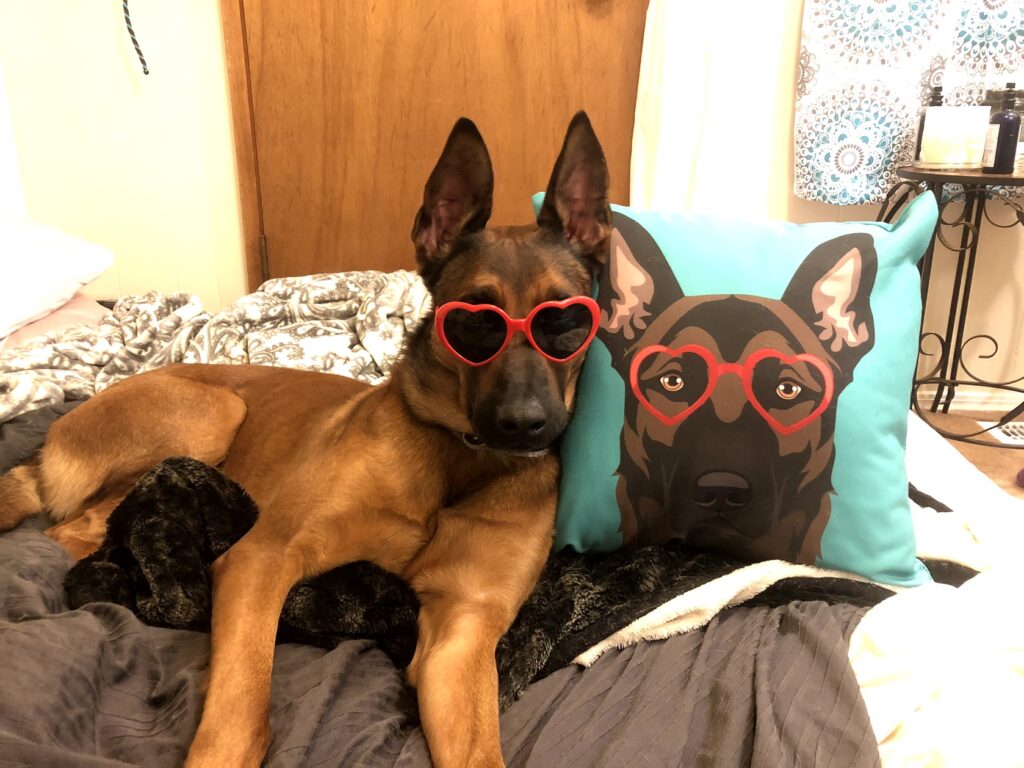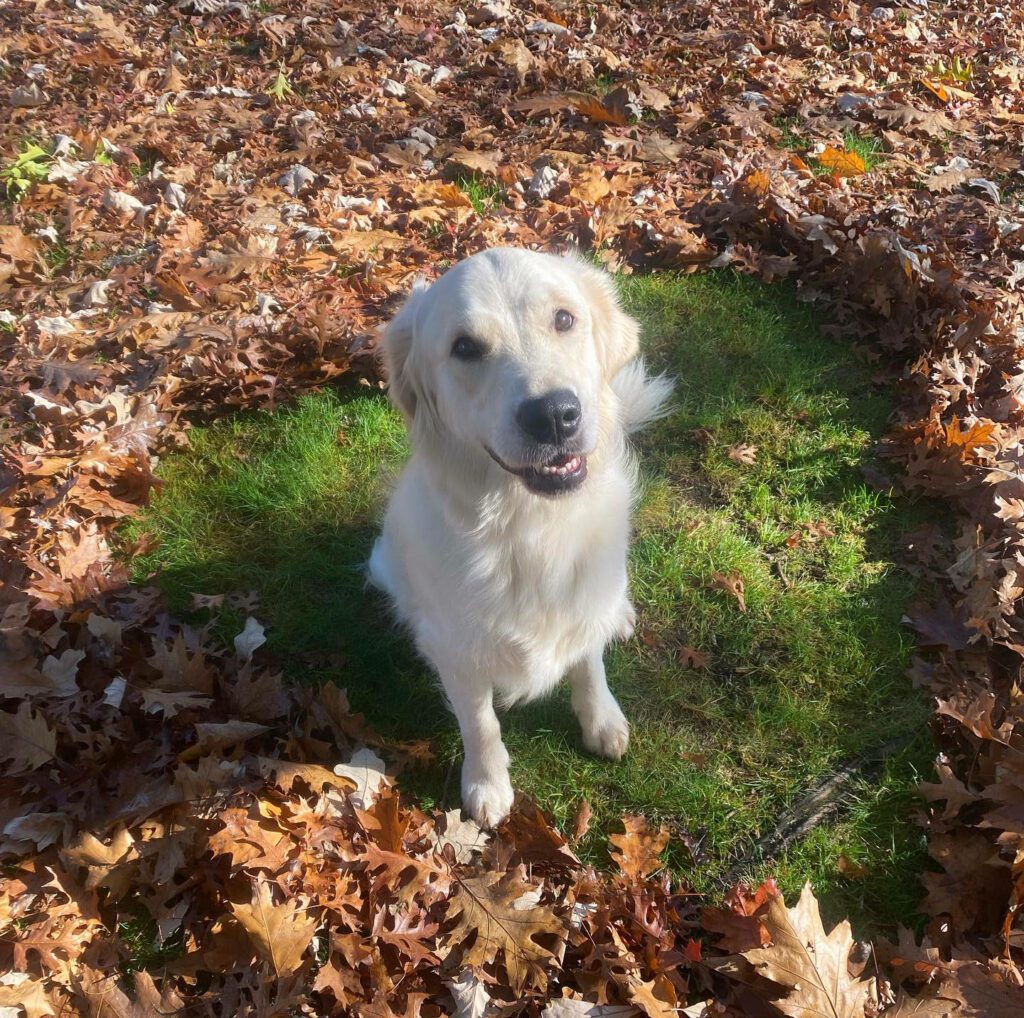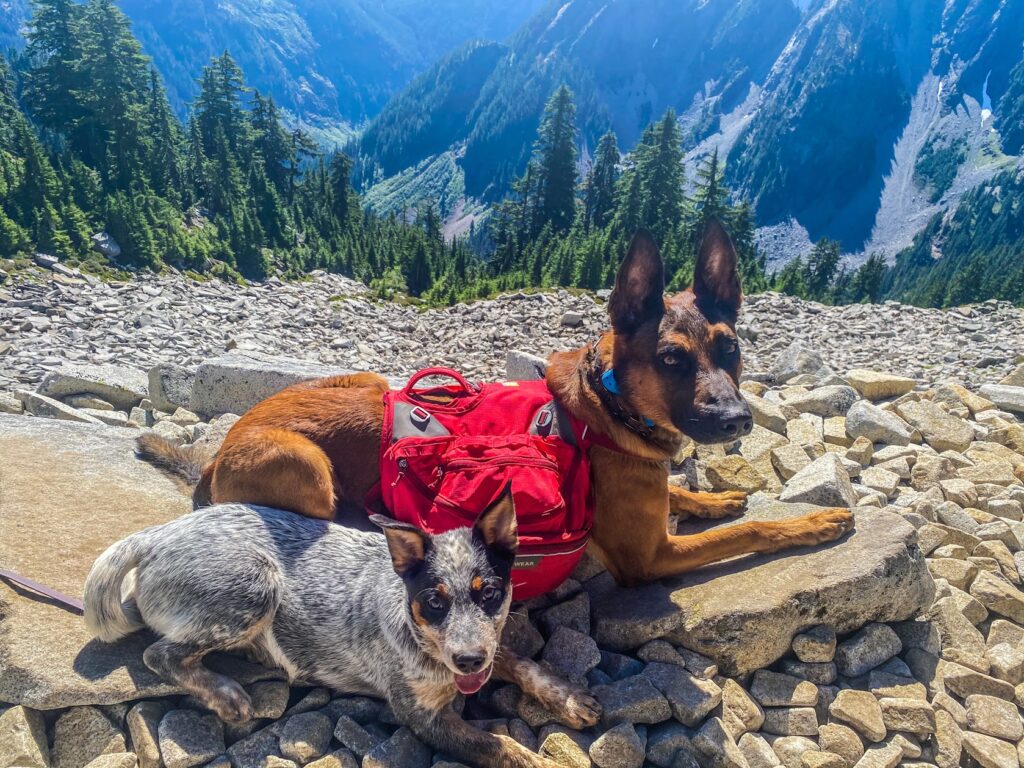Introduction
Training your dog is a rewarding journey that deepens the bond between you and your furry companion while ensuring their safety and obedience. One fundamental aspect of this journey is teaching your dog basic commands. In this guide, we’ll provide you with a list of essential dog training commands that serve as the foundation for a well-behaved and responsive pup.
Understanding this list and the proper usage of commands is key to enjoying your dog and maintaining the success of their training once they arrive home from a board-and-train or similar program.
If, on the other hand, you’re doing DIY dog training, now you’ll have a complete rubric of commands to guide you towards future dog behavior bliss. We hope it it is profitable either way!
An Important Note on Commands
It’s important to point out that not all dog training programs are the same; therefore the list of commands your dog might know once they complete their dog training program may differ from trainer to trainer.
It’s crucial to ask your dog trainer what they hope to achieve as a result of the program and make sure you are satisfied with their offer. Simply understanding and obeying commands is only one component of a successful dog training program, but it’s still a vital part, after all!
12 Key Dog Training Commands
Let’s delve into a list of crucial dog training commands that form the backbone of effective training:
1. Yes
The word “Yes” serves as a marker to indicate to your dog that a reward is imminent. Use it precisely when your dog displays desirable behavior or follows a command. Promptly follow it with a food or toy reward to reinforce the positive behavior.
2. Good
“Good” is a term for offering praise or general positive feedback when your dog behaves appropriately. Use this as a marker to acknowledge your dog’s good decisions and actions, strengthening their understanding of what you consider desirable behavior.

3. Free
“Free” is the release command, which can be accompanied by a hand gesture. Use it to allow your dog to move freely, understanding that they must maintain proper manners within the established rules. If your dog has been asked to sit, down, or place, saying “free” lets them know that it’s okay to get up.

4. No
The word “No” communicates to your dog that their current action is incorrect – perhaps they broke a command you asked them to do, put their feet on the counter, or you want them to leave something alone. It’s important to follow this with guidance on the desired behavior you’d like to see instead. Providing an alternate action after saying “No” such as “no, place,” or “no, come, sit,” is essential to guide your dog effectively.
5. Heel
“Heel” instructs your dog to walk alongside you, positioned at your left leg, with the dog’s collar even with your leg, – “Heel” also indicates to the dog that they should automatically sit when you stop. The rule for heeling is that you must give the command and immediately start walking; if you say heel and stand still your dog will be confused. Maintain a consistent tempo, emphasizing calm walking without distractions.
You should be able to make a left turn while heeling without running over your dog. If you can’t make a left turn then your dog is too far forward and you should mark “no,” then reissue the heel command. Heeling is all business for your dog – no sniffing, no jumping up, no barking, etc. – just walking calmly next to you and stopping when you stop.
Once you’ve given the heel command, your dog is in heel mode – you can stop and start as many times as you like without repeating the command.
Here’s a quick video we put together of some “advanced heeling” we performed at Home Depot!
6. Sit
Once your dog is in the “sit” position, they should remain there until given a release command or directed to “come,” “heel,” or “free.” You do not need to tell your dog to stay.
If your dog gets up from a sit you’ll want to guide them back to where they were sitting, then give the sit command again.

7. Down
Similar to “sit,” “down” indicates your dog should maintain the position until given an alternative command or released. Reinforce the requirement of having elbows on the ground and reset the command if you notice the dog is having trouble staying in the down position.
8. Come
The “come” command is a crucial recall directive, urging your dog to come directly to you and sit. Your dog should take this command very seriously as it could save their life one day. When you tell your dog to “come” they should come directly to you with no sniffing, drifting or sightseeing.
When you’re out with your dog, frequently asking them to come will keep them closer to your proximity and keep some of their focus on you as will as continue to educate them on the importance of the command.
In a typical 30-minute outing, we recommend recalling your dog 10 to 20 times – sometimes just for a quick touch, sometimes for a 2 or 3 second sit, then following the sit with the “free” command again. The more often you practice recalling, the more reliable and habitual this behavior will be, so you should aim to practice “come” frequently.
9. Let’s Go
A more informal recall command, “let’s go,” encourages your dog to come in your general direction without the urgency of a formal “come” command. It’s useful for various situations like moving indoors or for following you during walks.

10. Place
“Place” designates a specific area where your dog should remain until further instruction. Reinforce the concept that your dog must keep all four feet within the designated place, correcting any attempts to leave.
At the beginning, you’ll walk your dog up to their place, pat it with your hand and say “place.” It’s fine to have different “places” in different rooms and different types of “places” are fine (dog bed, mat, rug, etc.). Over time your dog will learn where their places are and you’ll be able to point from a distance, command “place” and your dog will know how to get there on their own. While on place your dog can relax, chew a toy, nap, adjust their position, etc., but they must keep all four feet on the place.
This is a convenient command for meal times when you don’t want your dog underfoot, and you can even use a blanket or towel as a place so that you can roll it up and take it with you to keep your dog on place while visiting friends and family.

11. Crate
The “crate” command, accompanied by a hand gesture, guides your dog to their crate. This is particularly useful for ensuring a designated space and promoting comfort and routine.
12. Quiet
Use “quiet” to remind your dog to maintain silence and stillness, particularly in their crate or to stop unwanted barking or whining. Accompany the “quiet” command with reminders when needed.
Conclusion
Mastering these basic dog training commands is an essential step towards fostering a well-behaved and obedient canine companion. Consistency, patience, and reinforcement are the cornerstones of successful dog training. So, embrace the journey, enjoy the progress, and cherish the incredible bond you’ll build with your furry friend through effective training. Happy training!


0 Comments